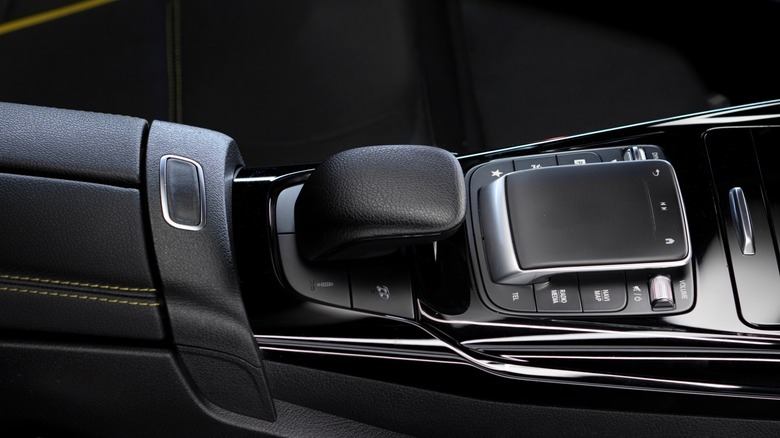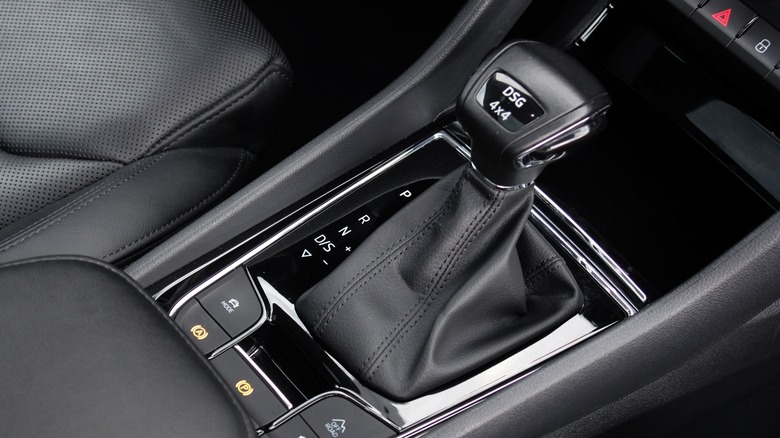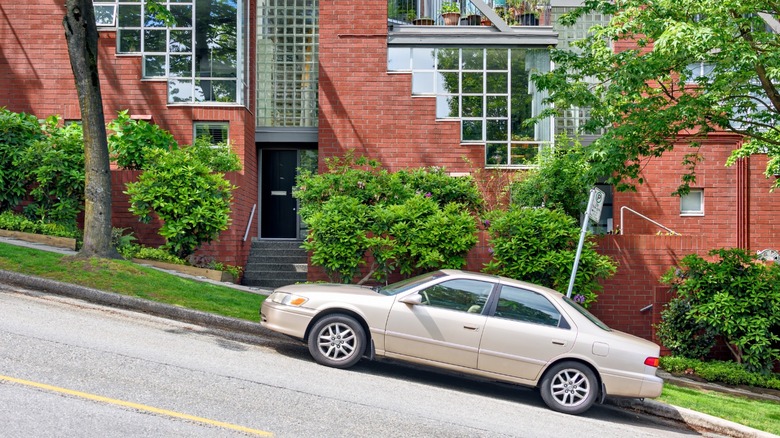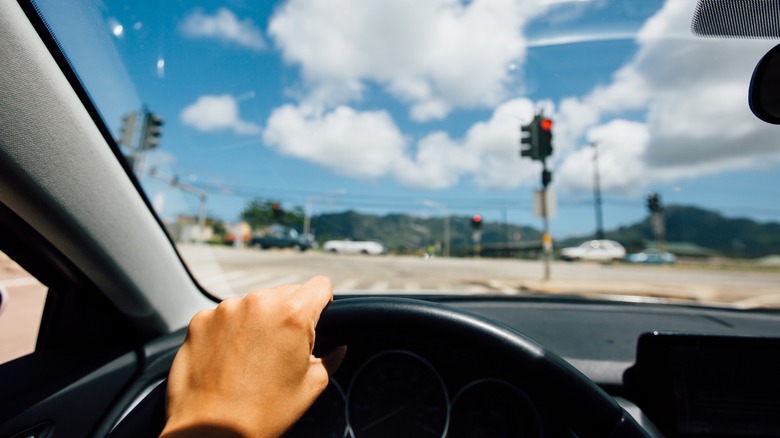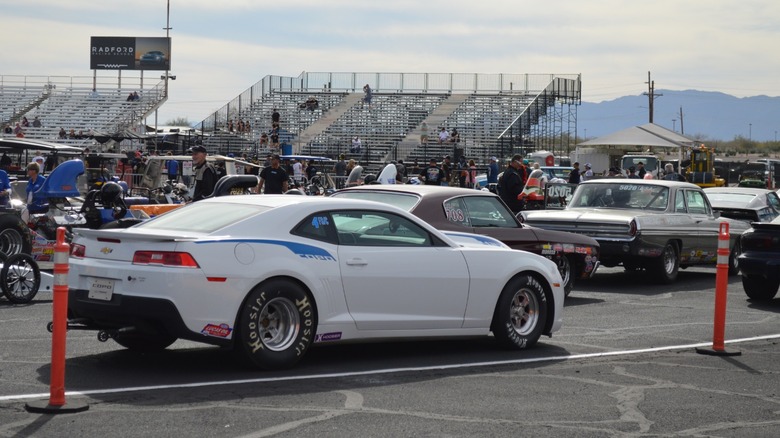5 Things To Avoid When You're Driving A DCT To Make Your Transmission Last Longer
DCTs or dual-clutch transmissions are different from the traditional automatic transmission in that it doesn't use a torque converter to transfer engine power to your wheels. Instead, it's like an automated manual transmission that uses two clutch mechanisms to make shifting gears faster.
This kind of transmission was first popularized in performance cars but is prevalent enough that you can now even find it in more pedestrian SUVs and family cars. DCTs are preferred for high-powered vehicles because of how quickly they can shift gears. This is because the DCT uses two different shafts to deliver power — one shaft for the odd gears and another for even, with each shaft having its own clutch (hence the dual-clutch term).
When the car needs to shift up, say from first to second gear, it will first engage the shaft that holds the second gear before disengaging the first gear. This allows the car to shift gears so quickly that your engine will continuously deliver power to the ground.
How to know if your car has a DCT
Because of the unique way that DCTs transfer power from the engine to your tires, there are some things that we often do in traditional automatics that aren't applicable to it, thus shortening its lifespan. So, the tips we are about to share are mostly applicable only to cars with DCTs. However, if you're driving a CVT or traditional automatic, these things might not apply to you. So, you should first check out the kind of transmission that your car has before following what we are about to say.
The easiest way to discover what kind of transmission your car has is to check the manual. You can look up the index and search for "Transmission." From there, you can go to the transmission section, and you should see what kind of transmission your car has. But if you've already lost the manual, you can also go to the manufacturer's website, look at the exact make and model of your car, and check the specifications table, which would indicate the transmission type that you have. Barring that, you can check the placard on your driver's side door, where you can find the code beside TR symbol; you can then search the internet or visit a local mechanic to determine what it means.
Inching or crawling your car in heavy traffic
Drivers who are used to traditional automatics would usually allow the car to crawl in slow traffic by engaging the gear and letting the engine torque to drive it forward through the torque converter. This is especially useful, as you don't have to step on the gas lightly to make it move along with other cars. However, this type of driving would make a DCT unhappy.
Since DCTs use clutches to engage the gears, inching in traffic will make the clutches slip constantly. This will result in additional heat and excessive wear on the clutches, potentially reducing their lifespans. Dry-type DCTs are especially prone to this issue, as they are not submerged in transmission fluid, which helps reduce friction.
If you're stuck in traffic, the best way to avoid this is to let the car in front of you move at least one car length ahead before you start going forward. That way, you don't have to drive so slowly that your clutches will slip.
Using the accelerator or gas pedal to hold your car at an incline
If you're stopped at an incline, you should never ride the gas pedal to hold your car's position. That's because doing so will force the transmission to fight against gravity, producing excessive heat and wearing down the clutches on your DCT. So, if you're driving uphill and have to stop, you should step on the brake pedal to keep your vehicle from rolling back. Feathering the accelerator could lead to premature wear, which might result in expensive service and repair on your transmission early in its lifespan.
Some DCT vehicles even have the Hill Hold Assist or Hill Start Assist feature, which keeps the brakes engaged for a few seconds even after you release them. That way, your car won't roll back when you're switching between the brake and accelerator pedals, thus reducing the need to use gas feathering to ensure that your car won't roll backward when moving forward on an incline.
Putting the transmission in neutral when stopped for short periods
Tradtional automatics use a torque converter that will always transfer some engine torque whenever the gear is engaged. That's why you need to shift to neutral whenever you're stopped — to prevent premature wear on your brakes and to stop your car from creeping forward if you do inadvertently slip off the brake pedal while at a stop.
However, DCTs are advanced enough that they know to disengage the clutches when you are at a stop, even if you're still in Drive. This means you can just engage the Auto Brake function of your car or raise the handbrake without needing to shift to Neutral.
Unlike traditional automatics, keeping the DCT in Neutral even at a complete stop does not burn extra fuel. And aside from making driving in slow-moving traffic more convenient, keeping the transmission in Drive will also allow you to respond more quickly to changing traffic conditions.
Imporperly launching your car from a complete stop
DCTs are known for their quick shifts, meaning your car will not lose engine power as it changes gear. This is primarily the reason why this type of transmission first became popular with performance cars. Because of this, you might be tempted to launch your DCT-equipped car from a complete stop to get the best acceleration.
However, you should never do this to your transmission unless your car is equipped with launch mode. An improper launch could seriously damage your transmission, as a sudden launch from a complete standstill could send unnecessary shock to the gears and clutches.
Instead, it's best to accelerate your DCT-equipped car smoothly. Once you get up to speed, that's when you can put your foot down and allow the transmission to extract as much power as it can from your engine. Alternatively, some high-performance cars with DCTs also have launch modes or launch control, so if you want to get off the line quickly without damaging your transmission, you should turn this feature on.
Shifting from D to R (or vice versa) without fully stopping
This is one of the things that you should avoid no matter what transmission you have. However, this is especially true with DCTs as doing so will place unnecessary shock on the clutch and gear systems. This shock will increase the wear on your car, leading to premature failure.
One more thing you should avoid is placing the transmission in P or Park while it is still moving. The P mode engages a pawl to lock the gears, and doing so while the car is still coming to a stop could damage it, especially if you do it frequently. So, the best thing you should do is to engage the parking brake first before putting it in park, and then releasing the pedal brake only after you complete these two steps.
Dual-clutch transmissions can make cars fun to drive, but you should avoid doing these things to avoid damaging them. That way, you can enjoy your car for much longer without having to worry about expensive maintenance and repair bills.
